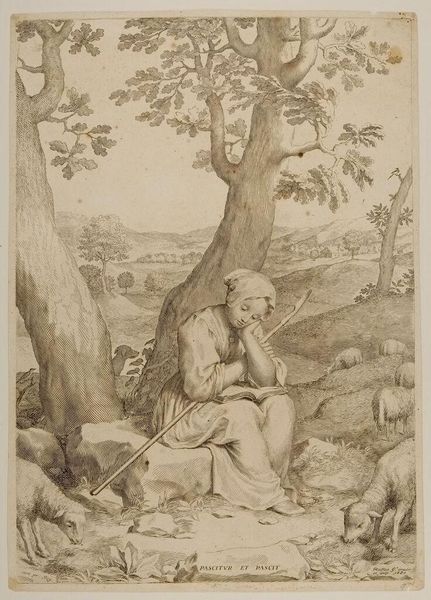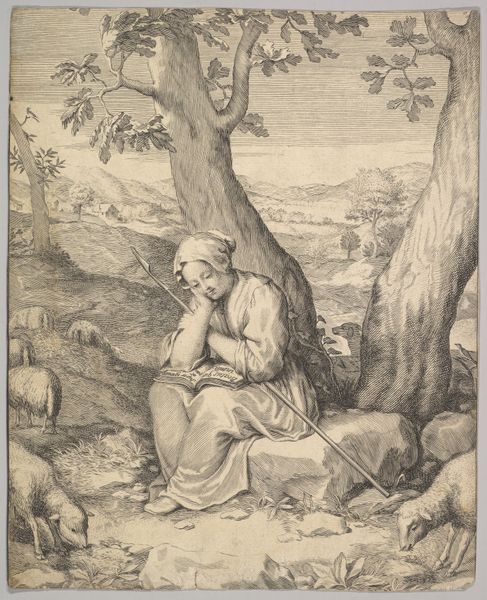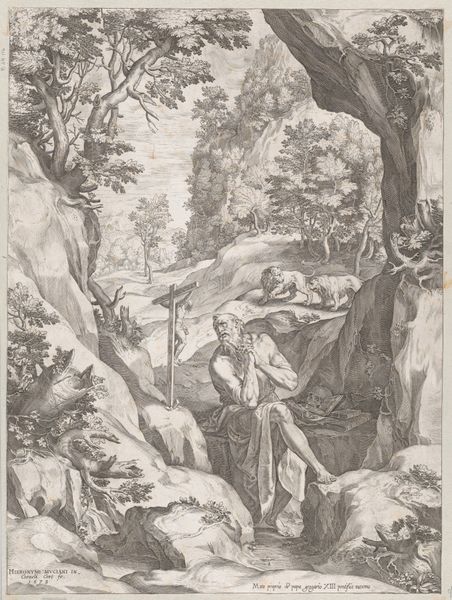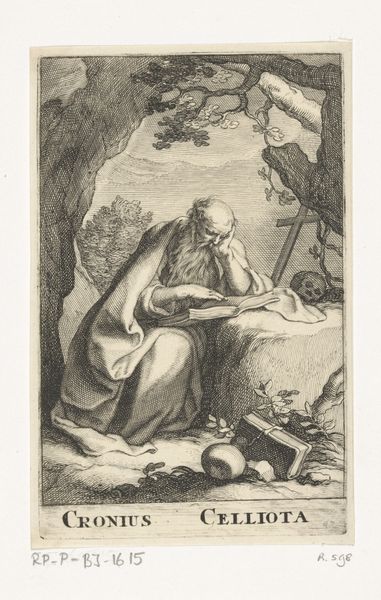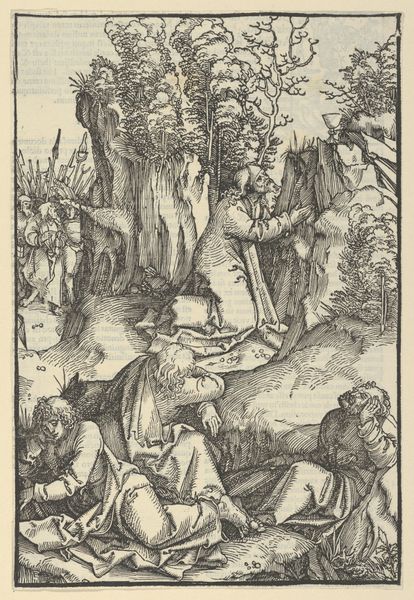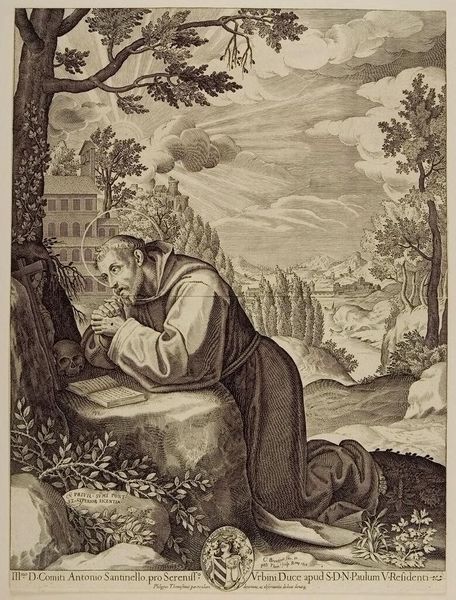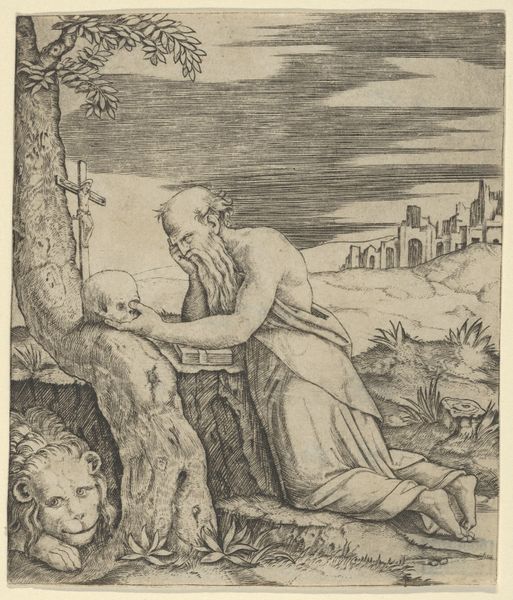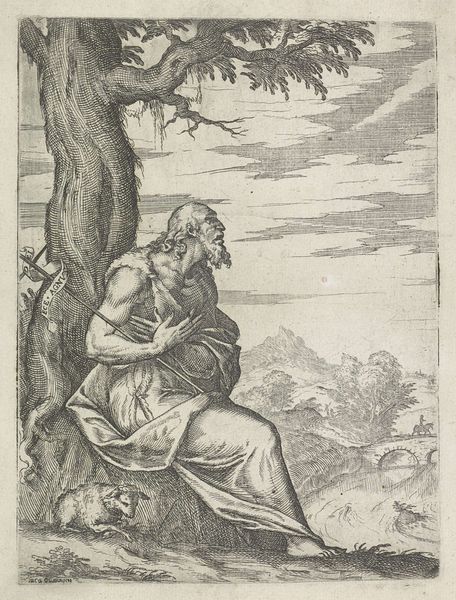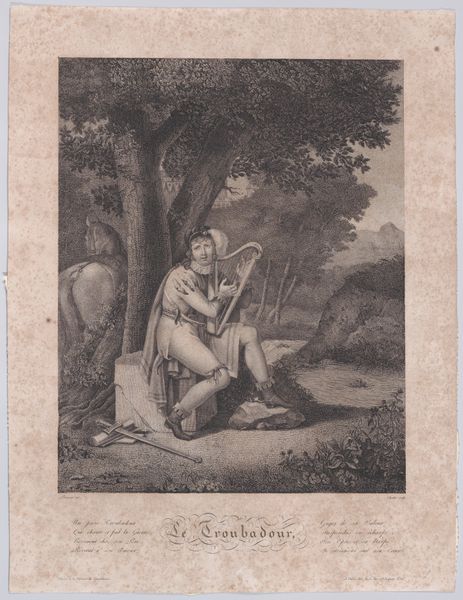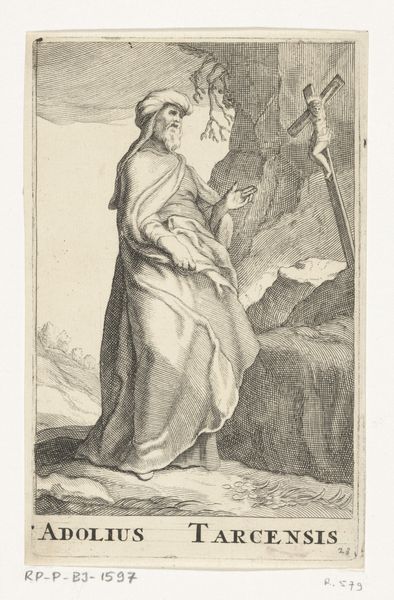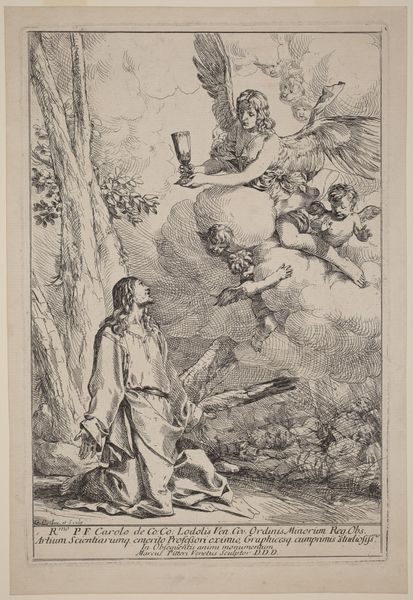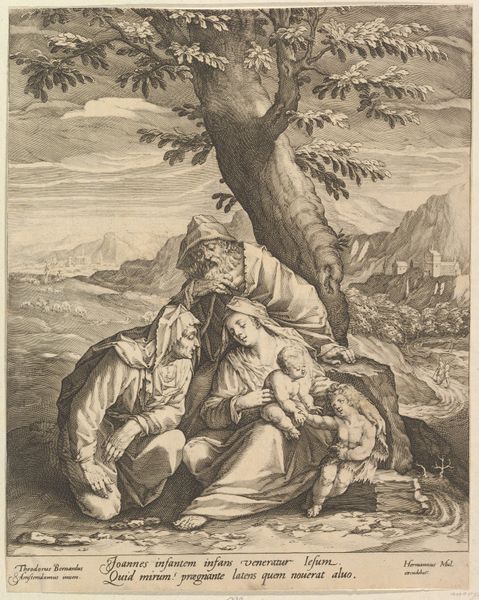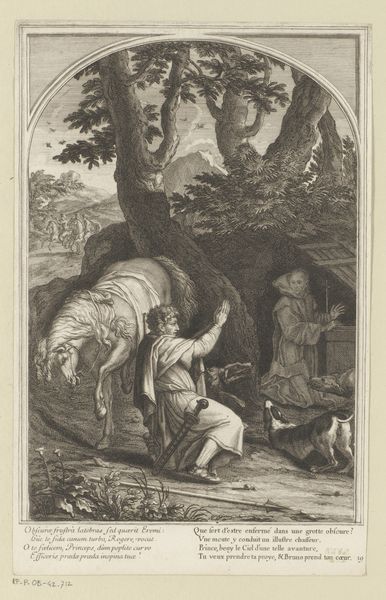
drawing, print, etching
#
drawing
# print
#
etching
#
landscape
#
figuration
Dimensions: sheet: 15 15/16 x 11 1/4 in. (40.5 x 28.6 cm)
Copyright: Public Domain
Editor: Here we have Claude Mellan’s etching from 1680, "St. Genevieve as a Young Girl." It's a serene pastoral scene, quite lovely. I'm curious about the choice to depict a saint in such a commonplace setting. What does the piece say about the socio-political environment when it was made? Curator: That's a very insightful observation. This piece needs to be viewed against the backdrop of 17th-century France, a time of intense religious and political maneuvering. Mellan’s choice to portray St. Genevieve, the patron saint of Paris, as a humble shepherdess connects the church with the everyday. The image subtly reinforces the notion of divine grace residing even in the most ordinary aspects of life, thus rendering her more relatable and aligned with social values that may seek order and common purpose. Editor: So, this portrayal is a deliberate choice to embed religious ideals within a secular context? Curator: Precisely. Consider that religious imagery at the time often served a didactic purpose. However, the placement of Genevieve within an ordinary landscape offers a specific invitation. Here the public may find resonance within what it knows, nature and simplicity. By removing the excessive fanfare around sainthood, this more humble depiction becomes deeply politically palatable for the viewers. Editor: I hadn’t thought of it that way. I was focusing more on the artistic composition, but this context completely reframes how I interpret it. Curator: Absolutely. Understanding the historical and cultural milieu in which art is produced significantly deepens our appreciation and helps clarify intention and broader impact. Editor: This makes me think about how the patronage of art impacted the messages being shared. Thanks! Curator: Indeed! And thinking about patronage will always expand one's view of what is presented to the public!
Comments
No comments
Be the first to comment and join the conversation on the ultimate creative platform.
